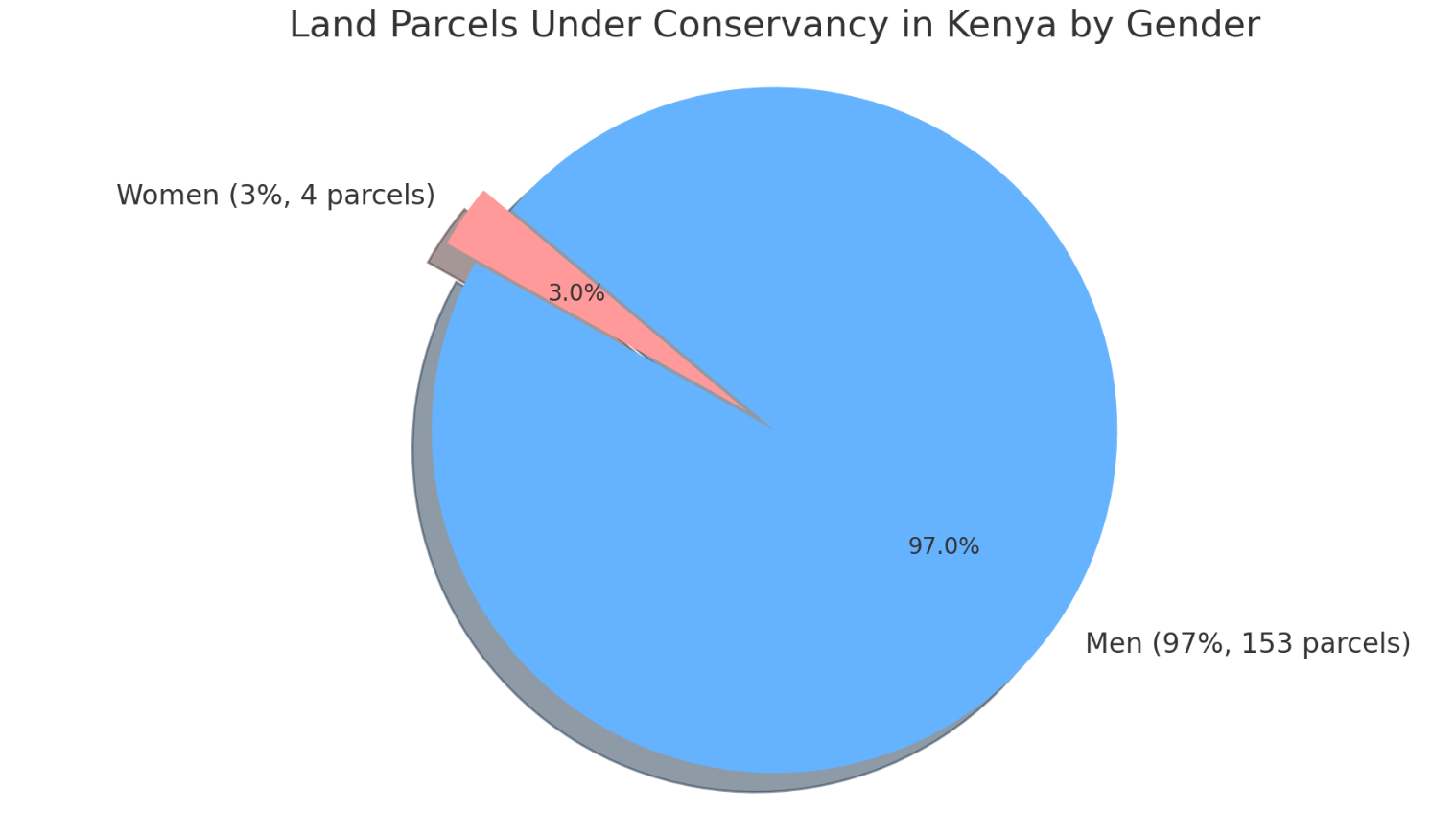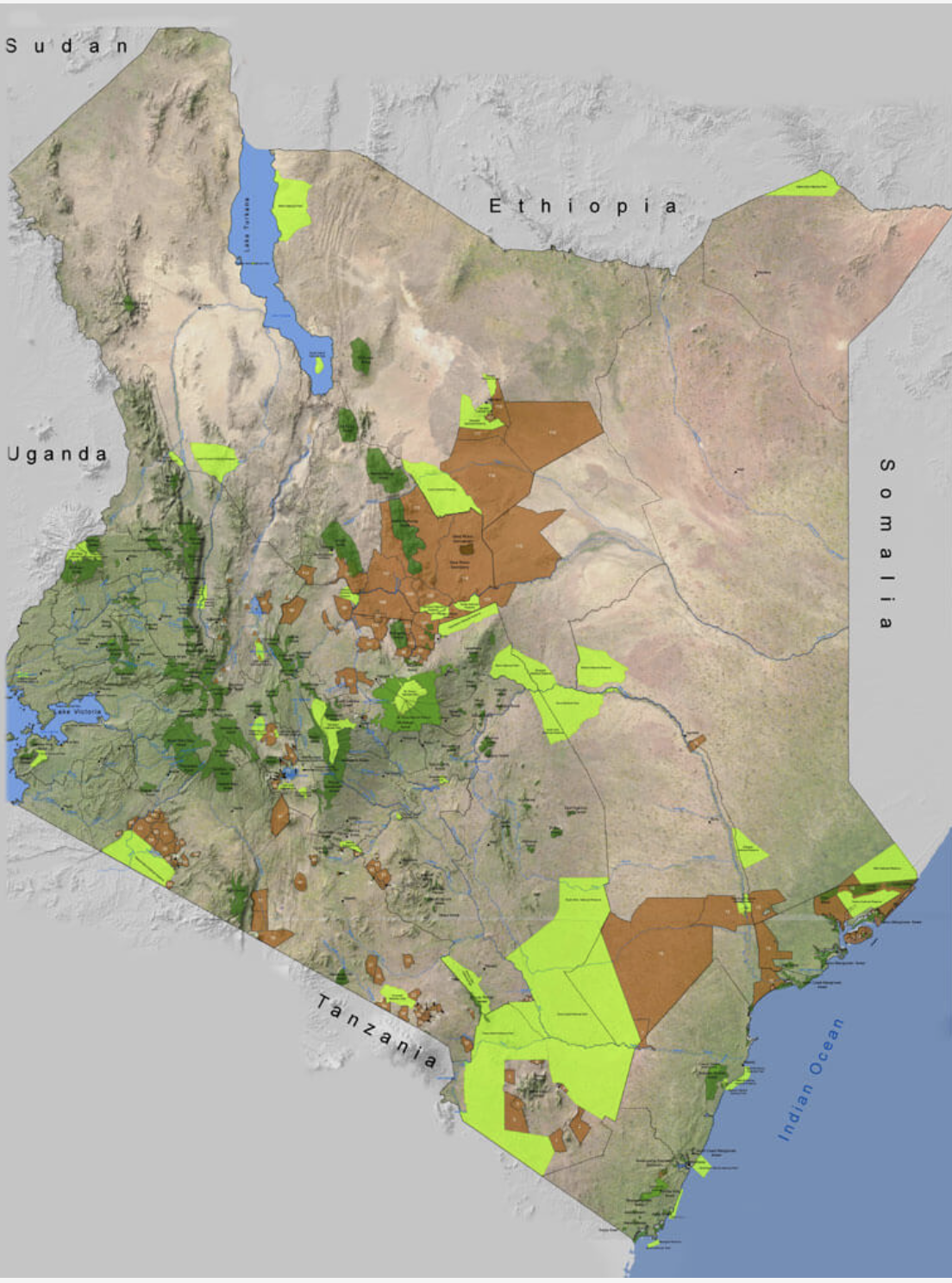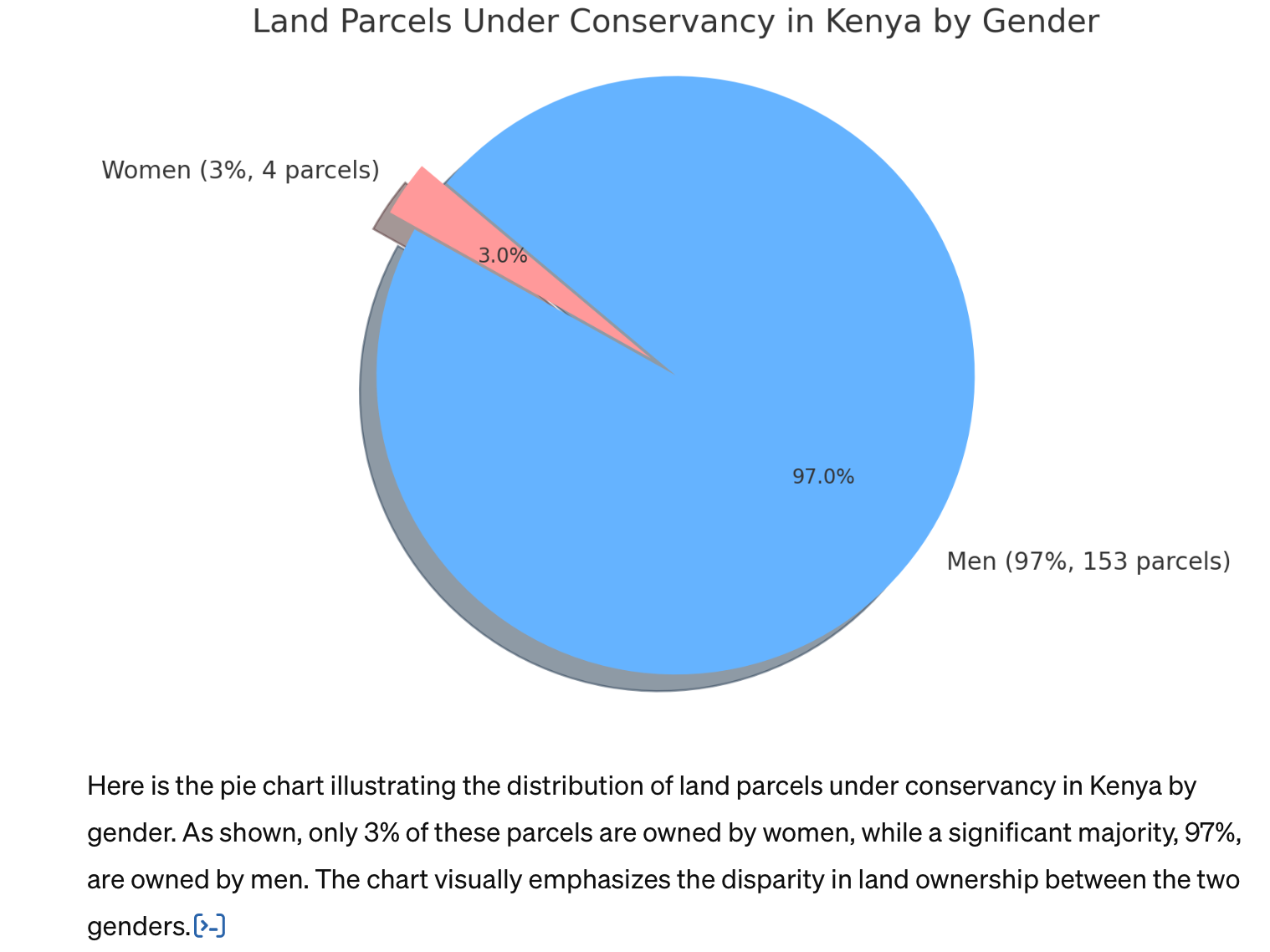Can we call it community conservation if women are absent?
Women own 3% of conservation land in Kenya. We need policies that promote gender equality in land ownership and recognize the invaluable role women play in conservation and environmental management.

Fewer than 3% of Kenya's community conservation lands are owned by women - further discriminating against women in country where women have historically been discriminated against. This matters because conservancies are by far the most important non state managed conservation areas in the nation, it's not just about land, it's about biodiversity conservation, rural economies, climate change adaptation, power politics and the future of our girls.
According to the Kenya Wildlife Conservancies Association, conservancies offer the greatest hope for conservation of our spectacular wildlife. They cover more than 6.35 million hectares, directly impact the lives of 930,000 households and secure the 65% of the country’s wildlife that is found outside national parks and reserves. This gives them enormous clout and lobbying power in the government, especially on benefits sharing and financing from the state.

For example, between December 2020 and December 2022, Conservation International launched and supported the African Conservancies Fund by providing more than $2 million in loans that were distributed to four conservancies (Mara North, Olare Orok, Motorogi and Olkinyei) spanning a total of 70,000 hectares (173,000 acres) while USAID has poured tens of millions of dollars into Kenyan conservancies over the last few years.
In the Maasai Mara alone, conservancies cover over 1,400 square kms and "generate nearly $5 million in lease payments for some 14,200 landowners annually", according to the Maasai Mara Wildlife Conservancies Association
According to the KWCA, "Conservancies are not only providing a public service by protecting and conserving majority of the wildlife in the country but also enhancing livelihoods.
It is for this reason that at KWCA, we are continuously fostering an environment that enables conservancies to unite and thrive and in so doing, protect the country’s rich wildlife while increasing conservation benefits in the communities".
In fact, conservancies are a political, and economic powerhouse. However, a recent scientific article reveals a disturbing secret. It was authored by international scientists including Joseph Ogutu, just co-authored a major article titled "Evaluating the determinants of participation in conservancy land leases and its impacts on household wealth in the Maasai Mara, Kenya: Equity and gender implications"

The article evaluates determinants of participation in conservancy land leases in the Maasai Mara and how they impact household wealth. They conclude that land ownership primarily determines who can participate and benefit from conservancies and by how much. And, they lament that the much applauded conservancy model in Kenya is fragile, because the structure of land leases reinforce unequal historical land distribution systems, limiting participation of women and the poor. They also conclude, that elite capture reveals that conservancy participation has little impact on household wealth.
Here's what is at risk if the disparity in land ownership is not addressed quickly and fairly for women.
1. Environmental Stewardship - African women have been proven to be effective stewards of the environment. By sidelining them in land ownership, we're missing out on sustainable and innovative conservation practices that could greatly benefit our ecosystems.
2. Accelerating loss of biodiversity - Diverse land ownership often leads to more varied conservation strategies, crucial for maintaining biodiversity. A gender monopoly in land ownership could lead to homogeneous approaches, jeopardizing our rich biological diversity.
3. Community development is being stifled: Land ownership is more than just property – it's a source of empowerment and economic stability. The current disparity means that women in communities are denied these opportunities, perpetuating cycles of inequality and hampering community development.
4. Aspirations and Education: When young girls and women see such disparities, their aspirations can be severely limited. It sends a discouraging message about their potential roles in conservation and environmental leadership. We need to inspire and empower all genders to be future custodians of our planet.
5. Climate change battle compromised: Women's unique perspectives and experiences are crucial in the fight against climate change. By not having equal representation in land ownership and thus in decision-making, we're not fully harnessing all available insights and strategies in this critical global battle.
It's time to take a stand against this stark gender disparity in conservancy land ownership in Kenya. This isn't just a local issue; it's a matter of global environmental justice and sustainability. We need policies that promote gender equality in land ownership and recognize the invaluable role women play in conservation and environmental management.
Spread awareness, demand change. Our planet and future generations depend on it.
#ConservationEquality #KenyaLandGap #ActForOurPlanet